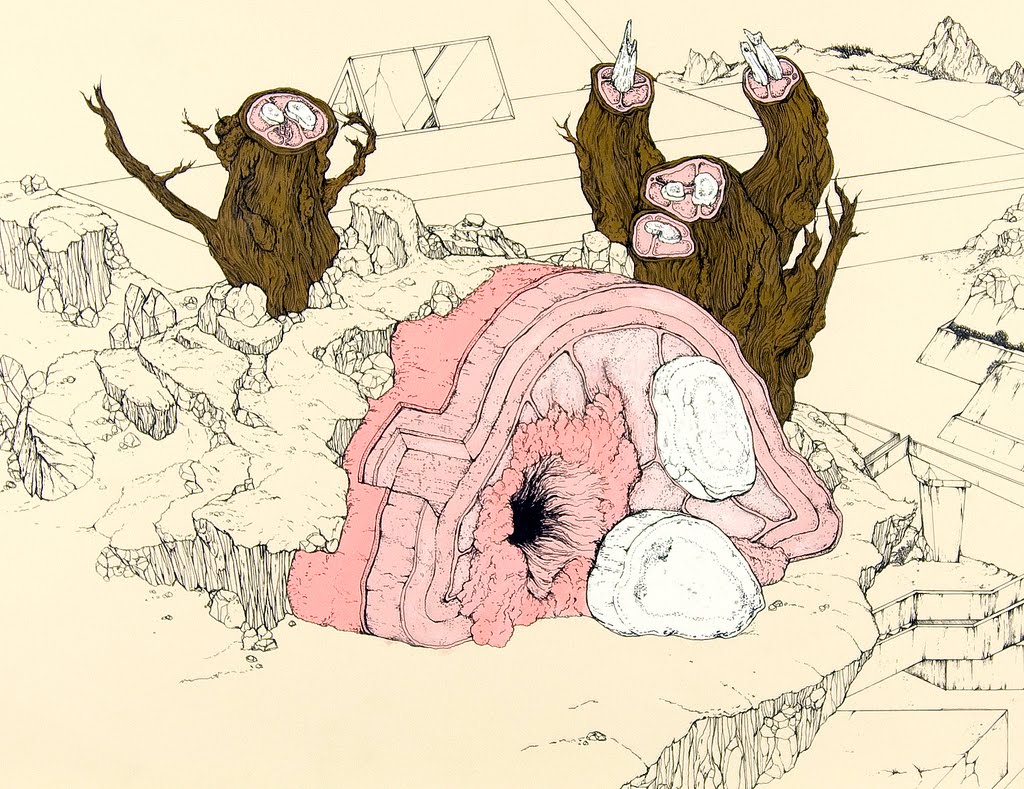Antarctica's "
Blood Falls", was initially thought to be red algae. But its spewing red because of ferrous ions in water coming into contact with oxygen. Ions of iron, were originally dissolved in what became an isolated pouch of ancient seawater (the former Antarctic Ocean) which was trapped below the Taylor Glacier during the Miocene period about about 23.03 to 5.332 million years ago- a time not-as-long-as-it-seems-ago in terms of geology; flowering plants were around accompanying the long-beaked
dolphin Pomatodelphis and our modern shark.
This isolated water pouch, which is the source of blood falls, contains a very high concentration of salts (brines) and is described as a hyper-saline solution. It is;
oxygen free- due to physical and chemical mechanisms at work progressing from this isolation,
rich in chlorides, rich in sulfates- association with marine conditions and
rich in ferrous ions- signaling microbial activity in the water and sub-glacial bedrock and its extremely
dark and cold. This sub-glacial ecosystem is a very unlikely place to find life considering these harsh conditions,
Extremophiles are organisms adapted to such extreme conditions. This makes it an interesting place to study when pondering over evolution and genetics and even speculating where else in the universe life could be found. Like Europa for example; Europa is one of Jupiter's moons, primarily made of
silicate rock with a likely
iron core. Europa has a feeble atmosphere containing a significant percentage of oxygen, and a thick crust of ice- suggestive of extreme types of 'sub-glacial' water pouches, oceans even. But it has yet to be proved/disproved if there in exists any bacterial life- or life of any description at all. Its very unlikely.
Possibly something worth engineering? Perhaps not? Who knows?
Actually, why not?
ANYWAY, when these soluble ferrous ions come into contact with atmospheric oxygen they are oxidized (surprisingly) and iron oxide has this rusty pigment you will probably recognize.



